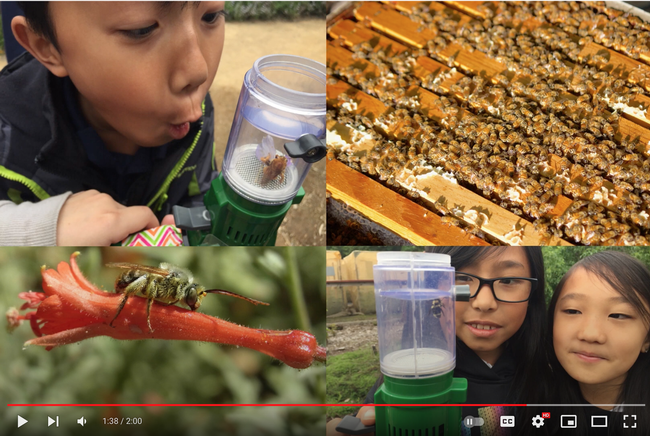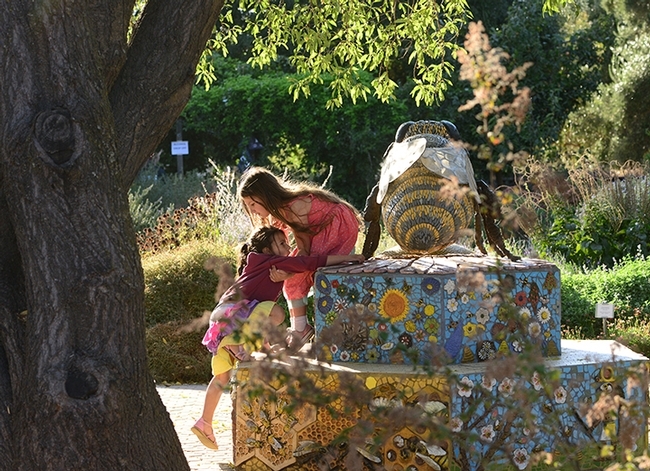- Author: Kathy Keatley Garvey
Do good things come in twos?
Well, yes. Today, 2-22-22, is a palindrome day. The numbers read the same way backward as they do forward.
And it happens to be a Twos-Day. It takes two.
What is a two? Two is a pair. Two is a couple. Two is a duet. Especially on a Twos-Day.
Can you imagine all the couples--twosomes--getting married today in Las Vegas?
Speaking of twosomes--we were, weren't we?--it's time to treasure insect wedding photography.
Love bugs all.
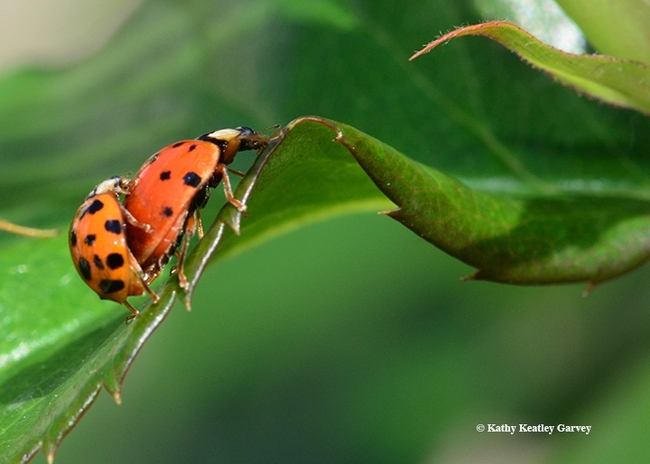

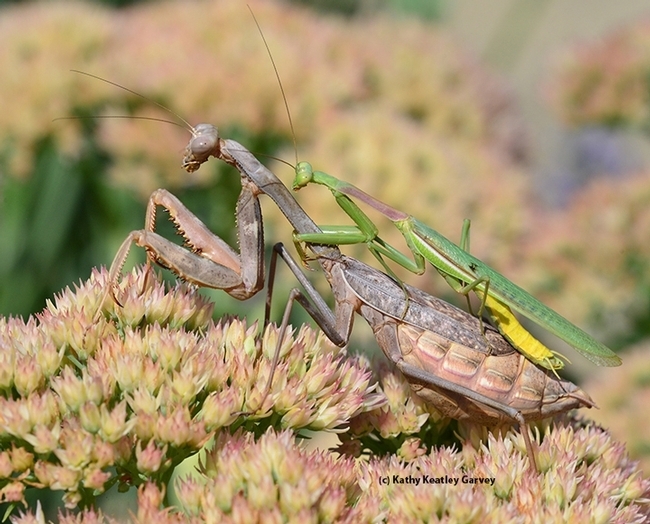
- Author: Kathy Keatley Garvey

How do they know?
Molecular biologist Adam Steinbrenner, an assistant professor of biology at the University of Washington, will explain his research at a UC Davis Department of Entomology and Nematology seminar on Wednesday, Feb. 23.
His public seminar, titled "Plant Immune Recognition of Insect Herbivores," will be both in-person and virtual. It begins at 4:10 p.m. (Pacific Time) in 122 Briggs Hall. The Zoom link is https://ucdavis.zoom.us/j/99515291076.
Steinbrenner and his team were the first to identify an immune recognition mechanism that sounds the alarm against chewing insects.
"From the moment of initial encounter with an insect herbivore, a suite of inducible plant defenses are triggered; however, the molecular mechanisms for recognition and response are not highly studied," Steinbrenner writes in his abstract. "Specific molecular patterns from insects can serve as elicitors of defense responses on host plants, but precise receptors mediating such responses have remained elusive. We recently identified a cell surface receptor, Inceptin Receptor (INR), which detects a set of ubiquitous peptide fragments found in the oral secretions of Lepidopteran larval herbivores. INR is specific to select legume species and may structure insect host range across this plant family. We hypothesize that INR serves as a recently evolved and highly potent mechanism to perceive a specific danger signal, above and beyond cues associated with generic tissue damage. I will discuss our recent transcriptiomic characterization of inceptin responses in bean and cowpea, highlighting strong anti-herbivore defense outputs which occur after inceptin treatment but not wounding alone. I will also compare plant responses to herbivory with well-characterized pathways mediating recognition of microbial pathogens.".
The Steinbrenner lab studies the molecular bases of plant immunity to pathogens and pests. "We are specifically interested in recognition and signaling functions of cell surface receptors and evolutionary processes driving novel immune specificity," he says on his website. He holds a bachelor of science degree in biology from Tufts University (2010) and a doctorate from UC Berkeley in plant biology (2015). He was awarded a Howard Hughes Medical Institute Postdoctoral Fellowship of $180,000 in 2016 and studied with Eric Schmelz at UC San Diego.
Steinbrenner served as the lead author of a paper published Nov. 23, 2021 in the Proceedings of the National Academy of Sciences on how cowpea plants detect that they're being eaten by caterpillars. In the article, A Receptor-Like Protein Mediates Plant Immune Responses to Herbivore-Associated Molecular Patterns, scientists from the University of Washington and UC San Diego reported that the cowpea plants harbor receptors on the surface of their cells that can detect a compound in caterpillar saliva and initiate anti-herbivore defenses.
"Despite chemical controls, crop yield losses to pests and disease generally range from 20-30 percent worldwide," Steinbrenner related in a University of Washington news release. "Yet many varieties are naturally resistant or immune to specific pests. Our findings are the first to identify an immune recognition mechanism that sounds the alarm against chewing insects.”
Wrote UW science writer James Urton: "The team showed that, in response to both leaf wounds and the presence of a protein fragment specific to caterpillar saliva, the cowpea's INR protein boosts the production of ethylene, a hormone that plants often produce in response to munching by herbivores and other types of environmental stress. The protein fragment in caterpillar spit that elicited this response, Vu-IN, is actually a fragment of a cowpea protein, which gets broken down by the caterpillar as it dines on cowpea leaves." (See full article.)
Nematologist Shahid Siddique, assistant professor, UC Davis Department of Entomology and Nematology, coordinates the Wednesday seminars. For any Zoom technical issues, contact him at ssiddique@ucdavis.edu.
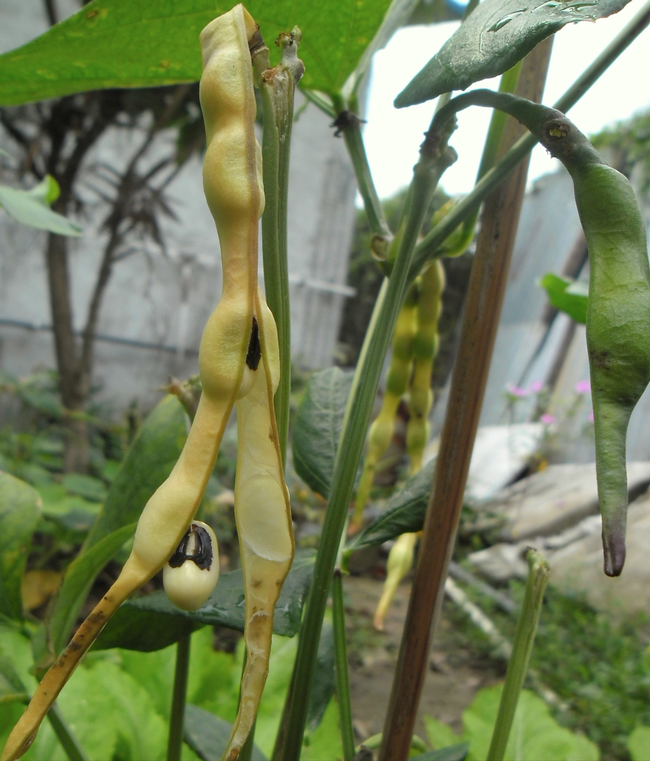
- Author: Kathy Keatley Garvey
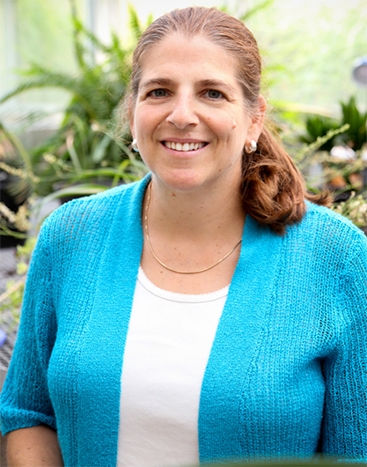
It's early spring and Western monarchs are heading inland from their overwintering sites along the California coast.
Have you seen any monarchs?
A group of monarch researchers from Washington State University, Tufts University, University of California at Santa Cruz, and the Xerces Society for Invertebrate Conservation seek your participation in the Western Monarch Mystery Challenge to help gain insight as to where the monarchs go. They want to fill "a critical gap in knowledge about habitat needs of migrating monarchs in the spring."
“We are very excited to see so many western monarchs on the coast this winter!" said conservation biologist and lead researcher Cheryl Schultz, a professor in Washington State University's School of Biological Sciences, in noting that the 2021 Thanksgiving count directed by the Xerces Society of Invertebrate Conservation totaled 247,237, a 100-fold increase from the less than 2000 monarchs recorded in 2020. "Monarchs are resilient. Because the numbers are up this year, it is a fabulous opportunity to learn where they go when they leave the coast as they head to breeding areas."
The challenge, launched Feb. 14 and to end April 22 (Earth Day), is a call to action: If you see a monarch in the area of California, Oregon, Washington, Nevada, Idaho and Utah (see map below), what you do is report the sighting, take an image (a cell phone photo is fine) and enter it the campaign for a chance at a prize.

While on sabbatical at UC Davis, Crone presented a seminar Jan. 29, 2020 to the Department of Entomology and Nematology on "Why Are Monarchs Declining in the West?"
“Surprisingly, we don't really know where western monarch butterflies are during this time period, roughly mid-February through mid-May," Crone told the UC Davis crowd. "Future research will focus on filling this knowledge gap, as well as building quantitative knowledge of the western monarch demography throughout their complex annual life cycle, which is needed to understand the relative contributions of habitat at different points in the life cycle to population declines and recovery.”
Crone related that what fascinates her about monarchs is "the possibility that we can recover the western monarch population from its recent steep decline to being abundant again. This should be a problem we can fix."
The Western Monarch Mystery Challenge "is an opportunity to get even more people to participate in western monarch community science–and these animals need our help right now, more than ever," said conservation biologist Emma Pelton of the Xerces Society.
"We know they spend winter months (November to February) in groves along the California Coast, and start breeding in central California in May," the group of researchers wrote in an email. "However, we know little about where monarchs are in March and April. Solving the mystery of where western monarchs spend the spring is central to conserving and restoring the phenomenon of monarch migration in the West."
The call to action, they said, is simple:
- If you see a monarch outside the overwintering groves, take a picture (don't worry, it can be blurry). We suspect that monarchs spend the spring somewhere between the coast and the Central Valley
- Report it to iNaturalist (the app is free) OR email it to monarchmystery@wsu.edu and include species, date and location
- Be automatically entered to win a variety of prizes every week you report a sighting. Be sure to check your messages on iNaturalist if you use the app to submit sightings. If you upload a monarch photo from outside the overwintering sites (and not any from monarch rearing projects as these "skew the data and could jeopardize the quality and legitimacy of conservation plans) you will automatically be entered in a weekly prize drawing. Prizes include gift cards to REI and other awards. More information is available at https://labs.wsu.edu/conservation-biology/western-monarch-mystery-challenge/
To stay updated, follow the Western Monarch Mystery Challenge on Twitter, Facebook, and Instagram.
The Western Monarch Mystery Challenge is supported by the Monarch Joint Venture in collaboration with the Western Association of Fish and Wildlife Agencies, as part of its Western Monarch Conservation Plan, 2019-2069, a regional program to restore and recover monarch butterflies across the Western landscape.
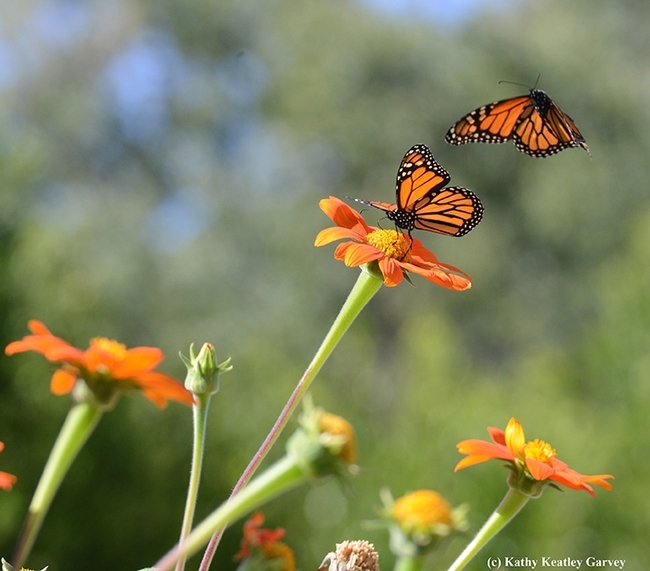
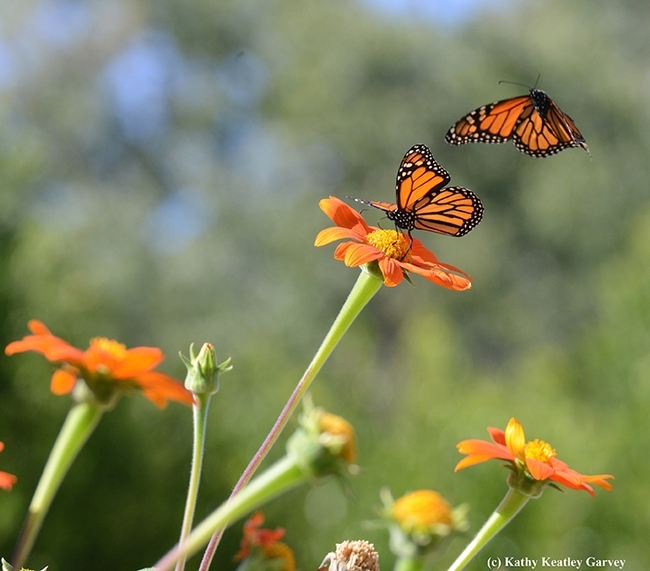
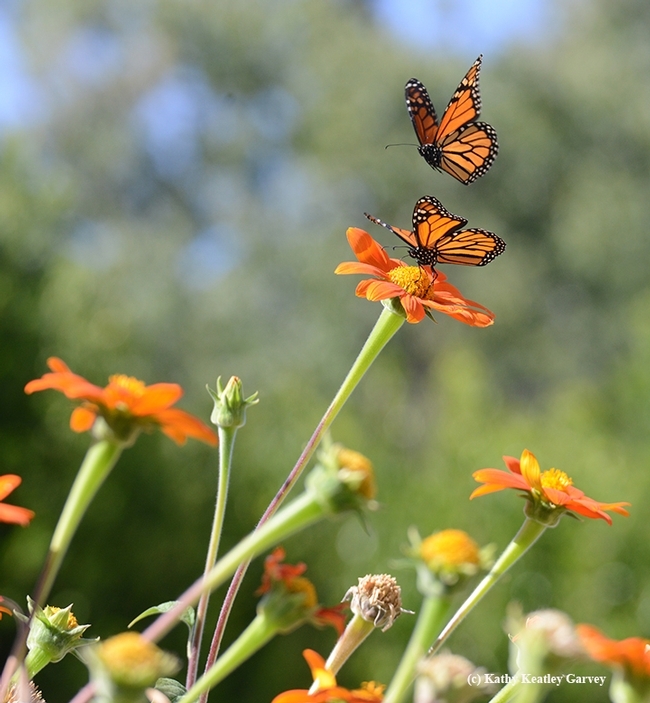


- Author: Kathy Keatley Garvey
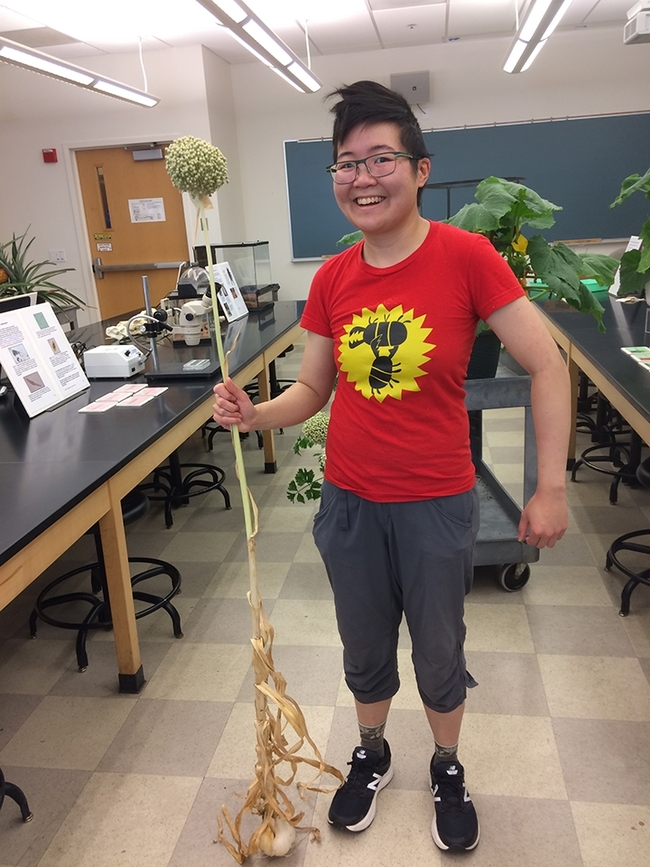
So when UC Davis biology laboratory manager (and talented artist) Ivana Li was asked in 2020 for a graphic to help publicize the UC Davis Biodiversity Museum Day, what better art than a double-decker bus featuring the participating museums and collections?
The graphic graced the volunteers' t-shirts that year. Then in 2021, the COVID-19 pandemic detoured the free, science-based, in-person event (usually held the Saturday of Presidents' Day weekend) and it rolled into a month of virtual presentations.
This year's event, the 11th annual, is set for 11 a.m. to 3 p.m. Sunday, March 6, in the UC Davis Conference Center, 550 Alumni Lane. For the first time, all the displays--from barn owls to stick insects to pine cones to Cretaceous fossils--will be in one place.
And Ivana Li has revised the bus art.
All aboard! C'mon in, Ms. Salt Marsh Harvest Mouse. Don't sit too close to Mr. Golden Eagle. Buzz in Ms. Honey Bee. Stay away from Mr. Chinese Praying Mantis, Tenodera sinensis. Sorry, but the driver can neither guarantee your safety nor your arrival at your intended destination.
Okay, roll call!
The passengers:
- California Raptor Center: Golden eagle
- UC Davis Arboretum and Public Garden: Valley oak leaf
- Anthropology Museum: Projectile point
- Botanical Conservatory: Titan arum
- Phaff Yeast Collection: Budding yeast
- Paleontology Collection: Skull
- UC Davis Bee Haven: Honey Bee
- Bohart Museum of Entomology: Chinese praying mantis, Tenodera sinensis
- Museum of Wildlife and Fish Biology: Salt marsh harvest mouse
- Nematode Collection: Hookworm
- Center for Plant Diversity: Seed cone of a gray pine
- Marine Invertebrates Collection: California sea cucumber (included on bus but this collection will not be included at the Biodiversity Museum Day)
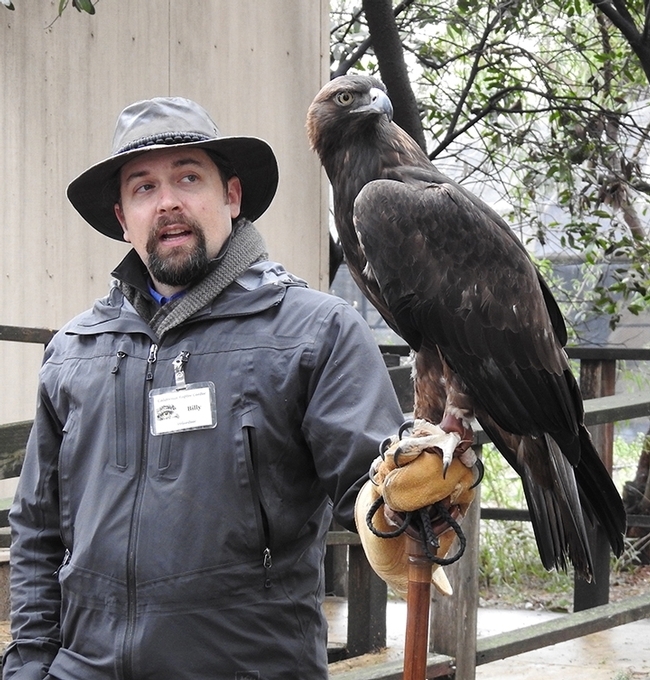
The UC Davis Biodiversity Museum Day promises to be educational, informative and entertaining. Scientists will be there to greet and talk to the visitors. Admission is free, as is the parking. Side trips or tours of some of the facilities or collections, including the Bohart Museum of Entomology, Botanical Conservatory, Arboretum and Public Garden, and the yeast collection are planned but not yet scheduled.
This event is open to the public, but to gain admission, all visitors are required to adhere to UC Davis COVID-19 policies and practices. Currently, this means wearing appropriate masks, being fully vaccinated or showing a recent negative test, and being approved to enter the campus via the Daily Symptom Survey. Attendees are expected to be primarily those associated with the UC Davis and Davis communities. (The general public will have an opportunity to see these displays and more at the 108th annual UC Davis Picnic Day, a campuswide open house on April 23.)
Want to support the annual UC Davis Biodiversity Museum Day? Please consider donating to the UC Davis Biodiversity Museum 2022 Crowdfund by accessing https://bit.ly/3HPhSaA. You can be anonymous in name or contribution, or you can add your name to the donor wall in honor of someone, or in memory of a loved one. The Crowdfund ends at 12:59 p.m. on Feb. 28.
Contributions from $5 on up are welcome, said project managers Tabatha Yang, education and public outreach coordinator for the Bohart Museum of Entomology, and Rachel Davis, a GATEways horticulturist and museum scientist at the UC Davis Arboretum and Public Garden.
"Donations will not only help us sustain the free, in-person event, it will enable our student interns to take science outreach to a whole new level," they said. "The goal of our event is to connect people from all walks of life to science and the biodiversity surrounding them. All donors will be recognized on the Biodiversity Museum Day social media accounts with a shout-out post."
Any amount is appreciated: $5 will get you into the Fantastic Yeasts category; $10, the Sprout (Valley Oaks) category; $25, the Bumble Bee category; and $50, the Jeweled Spider Fly category. Other categories include Atlati, California Condor, and Smilodon. The goal: $5000.
For more information, access the UC Davis Biodiversity Museum Day website and/or connect with Instagram, Twitter, and Facebook.
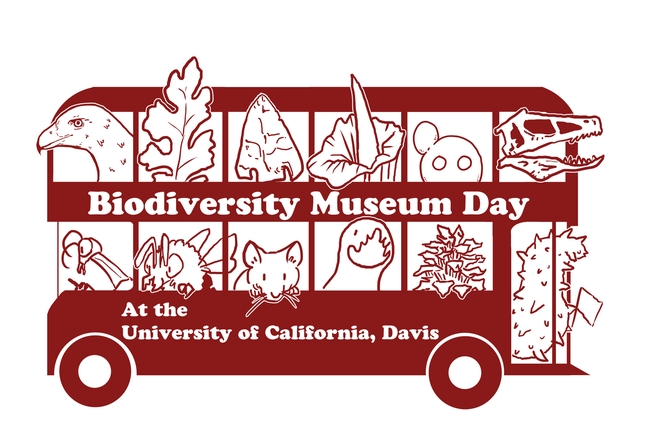
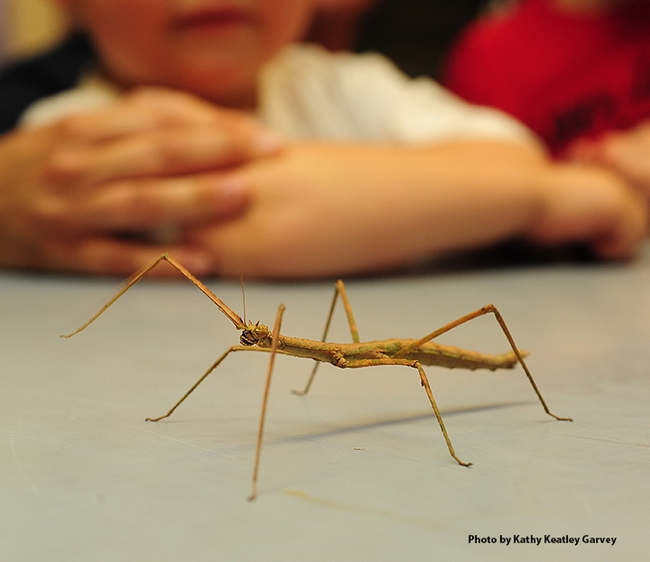
- Author: Kathy Keatley Garvey

The information they glean, process and retain as they learn about the importance of bees.
That's what's in store for classes attending field trips to the UC Davis Bee Haven, a half-acre public bee garden located on Bee Biology Road, west of the central UC Davis campus.
The problem is--not that many schools can afford field trips.
"Our CrowdFund will provide funding to three Title I schools or affiliated youth groups that will cover the guided tour fee and transportation costs for up to 50 people (students, teachers, parents) to participate in a 90-minute field trip at the Bee Haven on the UC Davis campus," according to Christine Casey, academic program management officer for the UC Davis Bee Haven, an educational bee demonstration garden maintained and operated by the UC Davis Department of Entomology and Nematology.
"We will fund up to $1000 per school," she writes on the Crowdfund website. "Our unique outdoor learning adventure has been experienced by nearly 50,000 visitors since 2013."
"Participants will see and learn about the 200 plant and 80 bee species that occur at the Haven. They will safely catch and observe bees and participate in a grade-appropriate bee monitoring exercise that will introduce them to scientific research and create a memorable learning adventure about bees, plants, science, and the natural world. We'll also provide books for each school's library that can be used to extend program impact."
The bee garden, located next to the Harry H. Laidlaw Jr. Honey Bee Research Facility, is open daily from dawn to dusk except for Tuesdays (open at 10 a.m.) "so we can maintain physical distance during garden maintenance," Casey says.
The Haven was installed in the fall of 2009. Self-described "rock artist" Donna Billick of Davis created the six-foot-long, 200-pound ceramic mosaic sculpture of a worker bee using ebar, chicken wire, sand, cement, tile, bronze, steel, grout, fiberglass and handmade ceramic pieces. Installed in 2010 near an almond tree, Billick named it "Miss Bee Haven." Bee scientists marvel at the anatomical accuracy, right down to pollen baskets and stinger. Visitors eye it, examine it, and photograph it.
Want to learn more about the fundraising project? View Casey's YouTube video and access the Haven website.
All contributions to support the fundraising project are welcome and appreciated. Click the CrowdFund site at https://crowdfund.ucdavis.edu/project/29773. The goal is $3000. The project ends at 12:59 p.m., Feb. 28.
